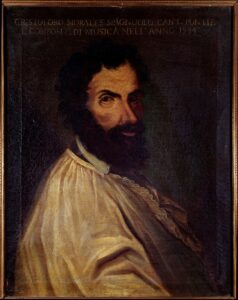Morales, Lux aeterna
 The renowned early music scholar Gustav Reese called Cristóbal de Morales (1500-1553) the “first great Spanish master of the Late Renaissance.” Where does that fit with our discussion a few weeks back about Juan de Anchieta (1462-1523)?
The renowned early music scholar Gustav Reese called Cristóbal de Morales (1500-1553) the “first great Spanish master of the Late Renaissance.” Where does that fit with our discussion a few weeks back about Juan de Anchieta (1462-1523)?
Morales belonged to the generation after Anchieta. Anchieta had worked under Ferdinand and Isabella, who had unified Spain under the Catholic Monarchs and ushered a period of stability and artistic flourishing. He made notable contributions to both sacred and secular music. Morales lived in a time of continued stability and with the exploration of the Western hemisphere expanding the Spanish Empire, but he spent his life in service to the church and wrote very little secular music.
Morales was named maestro de capilla at the Cathedral of Avila in 1526. What little is known about his family suggests that some held positions at the Cathedral in Seville. Morales is documented to have been in Rome in 1535 as a singer in the papal choir. It appears that he mostly remained in Rome for ten years under the papacy of Paul III (r. 1534-1549). Paul III left his mark on history for initiating the Council of Trent in 1545, the completion by Michelangelo of the Sistine Chapel in 1541, and the excommunication of Henry VIII, among other things. They were interesting times.
Morales took up the position of maestro de capilla at Toledo in 1545. He was apparently well aware of his talents and not particularly gracious to less talented colleagues, which had some detrimental effect on his ability to hold a job. But he achieved significant refinement of choral polyphony. His music is characterized by simplicity and elegance.
The Lux aeterna appears at the end of his Missa pro defunctis (mass for the dead).



